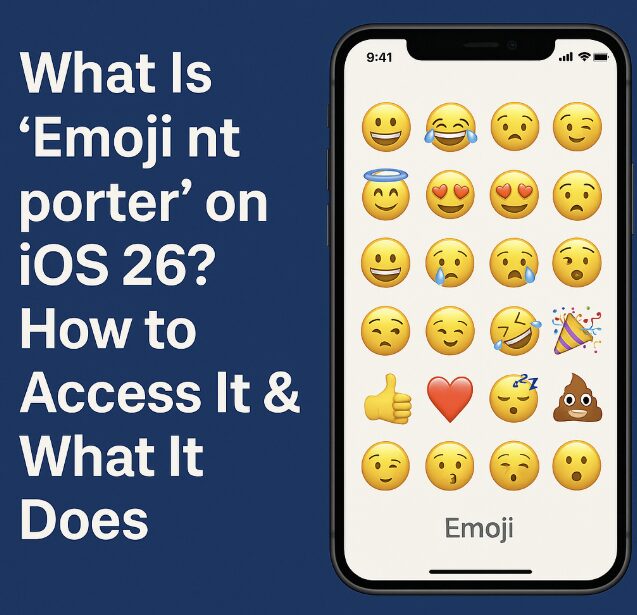If you’ve been exploring iOS 26 and came across a setting called “Emoji nt porter,” you’re not alone. Many users have spotted it in the new beta builds or accessibility menus and are left wondering what exactly it does. Despite the mysterious and somewhat cryptic name, “Emoji nt porter” appears to be part of Apple’s broader focus on personalization, accessibility, and AI-powered enhancements in 2025.
In this post, we’ll break down what ‘Emoji nt porter’ actually is, how to find it, and how it works in real-world use.

What Is ‘Emoji nt porter’ Exactly?
At first glance, the name “Emoji nt porter” sounds like a typo or internal developer code. In fact, many believe it’s short for “Emoji Interpreter” or “Emoji Importer,” and Apple has yet to formally clarify the naming.
From hands-on tests and user reports in the beta community, ‘Emoji nt porter’ seems to be a new accessibility or input tool that allows:
Automatic interpretation of emoji sequences
Real-time translation of emoji-based messages into plain text
Personalization of emoji-based shortcuts or reactions in messaging apps
Enhanced text-to-speech support for emoji-rich content
In short, this tool could help users better understand or customize emoji-heavy messages, especially in accessibility scenarios where screen readers are used.
Where to Find It in iOS 26
If you’re using the iOS 26 beta, here’s how to locate the feature:
Open Settings
Scroll down to Accessibility
Tap on Spoken Content or Live Speech (based on build version)
Scroll to find Emoji nt porter toggle or menu
On some devices, it may appear under Keyboard Settings or iMessage Experimental Features. Since iOS beta versions vary, the feature’s exact placement might change over time.
How Emoji nt porter Works
Once enabled, the tool can:
Read emoji out loud with contextual interpretation (e.g., reading “😢” as “sad” instead of “crying face emoji”)
Convert emoji sentences into logical summaries
Support custom voice commands using emoji patterns
Offer predictive emoji-to-text suggestions in iMessage
Some early testers noted that it integrates well with Siri suggestions and even offers smart replacement of emojis based on tone and conversation flow.
Why This Feature Matters in 2025
Emoji usage is no longer just playful. In a world dominated by visual-first messaging (especially among Gen Z), emojis convey nuanced tone, emotion, and even intention. For users who rely on assistive technology—or just want faster interpretation—this tool can make conversations easier to navigate.
It may also serve a broader AI goal: helping Apple devices better understand user intent based on nonverbal input.
Can You Turn It Off?
Yes. If you find the feature distracting or unnecessary, you can toggle it off by reversing the steps in Accessibility settings.
Since it’s still in beta, some users report that disabling it may require restarting the device or force-quitting affected apps like Messages.
Will It Be Available on All Devices?
As of now, the feature appears on most iPhones running iOS 26 Beta, especially devices with Apple Neural Engine (A14 chip or later). If you’re not seeing it, your device may not support the processing requirements, or the feature might be limited to certain regions during testing.
Final Thoughts on Exploring Experimental iOS 26 Features
While Apple hasn’t formally announced “Emoji nt porter,” it reflects the company’s direction toward intelligent, user-personalized communication. As we continue seeing iOS blend visuals with AI interpretation, tools like this help users make the most of their digital conversations.
If you’re curious about future updates, it’s worth following the Apple Beta Program site to stay informed on upcoming releases and feature changes.
More features like this are expected as iOS 26 continues to evolve—so keep exploring, and don’t forget to leave feedback through the built-in Feedback Assistant if you try it yourself.
